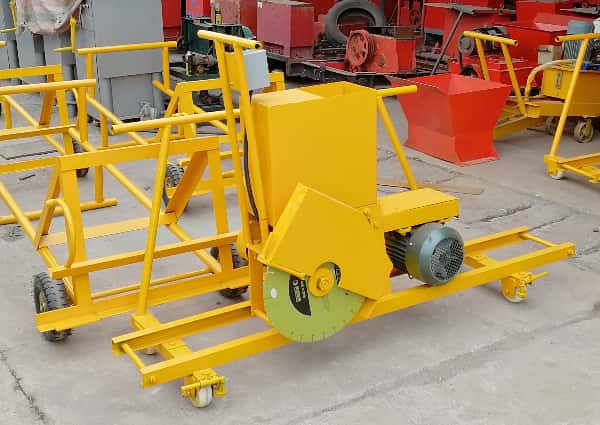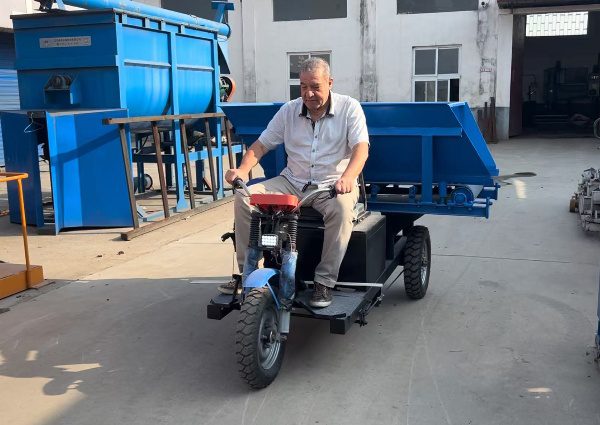Centrale à béton
Quel type de machine recherchez-vous ? LAISSEZ-NOUS VOUS AIDER À TROUVER LE BON ÉQUIPEMENT DE FABRICATION DE PRODUITS EN BÉTON PRÉFABRIQUÉ !
Precast concrete extruder supporting equipment supplier
Henan Kelai Industrial Co., Ltd. is a leading manufacturer of precast concrete equipment in Henan, China. As a professional manufacturer and exporter, we specialize in designing and producing various concrete product-making machines, including slab floor, wall panel, fence panel, column (T, H, I, L, U, V… shapes), pipe, block machinery and Concrete Mixer Batching Plant along with supporting and installation equipment.In addition to our standard product line, we offer customized solutions to meet specific customer needs.
With over 20 years of export experience, our dedicated team ensures our equipment, known for durable quality, high productivity, and cutting-edge technology, reaches clients worldwide. We are committed to building long-term, honest, and mutually beneficial partnerships with construction companies globally.
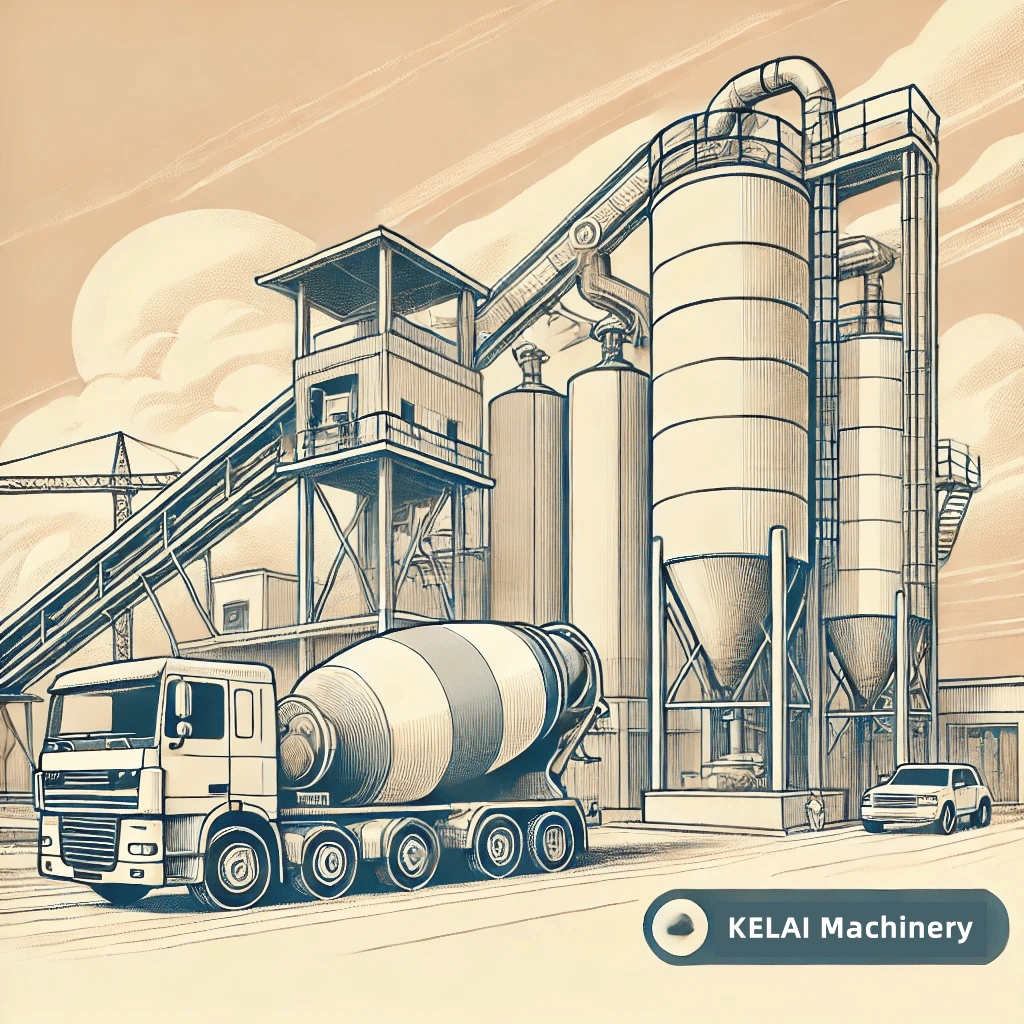
Working Principle of Concrete Mixing Plant
The working principle of a concrete mixing plant is to meter, transport and mix raw materials such as cement, sand, stone, water and admixtures according to the preset ratio, and finally produce concrete that meets the engineering requirements. The whole process is usually managed by an automated control system to ensure production efficiency and concrete quality.
Raw material storage and supply
Aggregates (sand, stone): delivered to aggregate silos by loaders and transported to batching systems via belt conveyors or hopper elevators. Powders (cement, fly ash, etc.): stored in cement silos and transported to metering systems via screw conveyors. Water and admixtures: stored in water tanks and admixture tanks respectively, and transported to metering devices via pipelines.
Raw material metering
Aggregate metering: Aggregates such as sand and stone are weighed by electronic metering systems. Powder metering: Powders such as cement and fly ash are weighed by screw weighing systems. Water and admixture metering: flow meters or weighing systems are used to accurately control the amount of addition.
Conveying and feeding
After the metering is completed, the aggregate enters the mixer directly through the belt conveyor or hopper. Cement and other powders are fed into the mixer through a screw conveyor. The measured water and admixtures are transported to the mixer through a pipeline.
Concrete mixing
Start the mixer and mix all the raw materials evenly to ensure that the concrete meets the set quality standards. The general mixing time is 30-90 seconds, which may vary for different models of mixers.
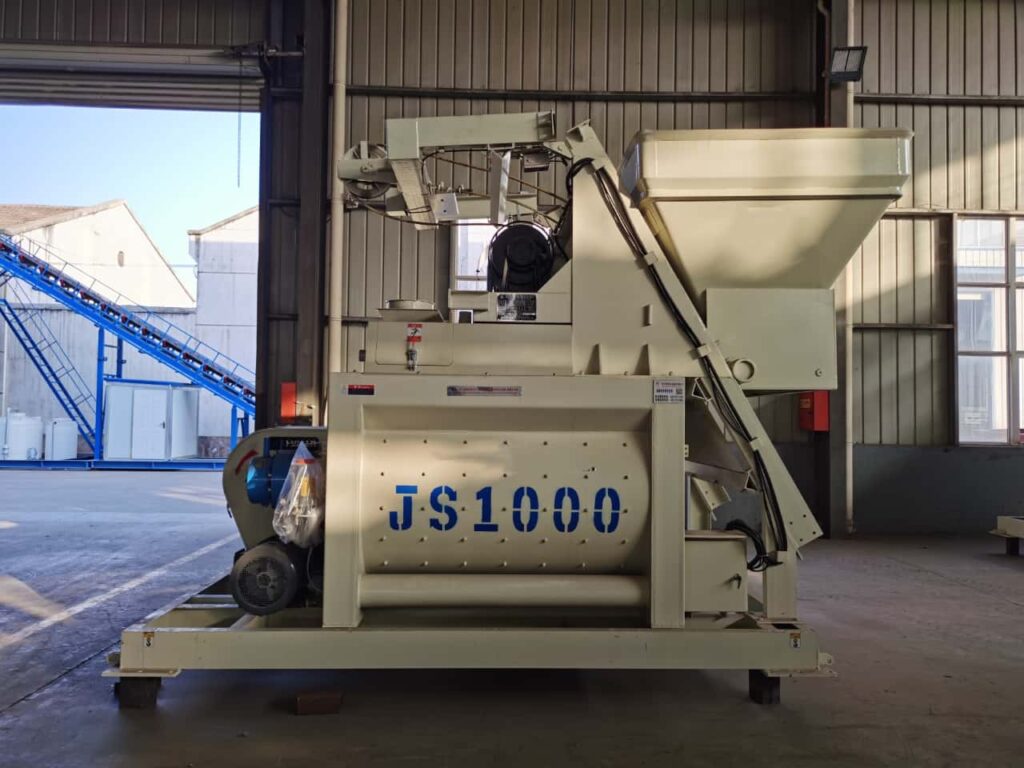
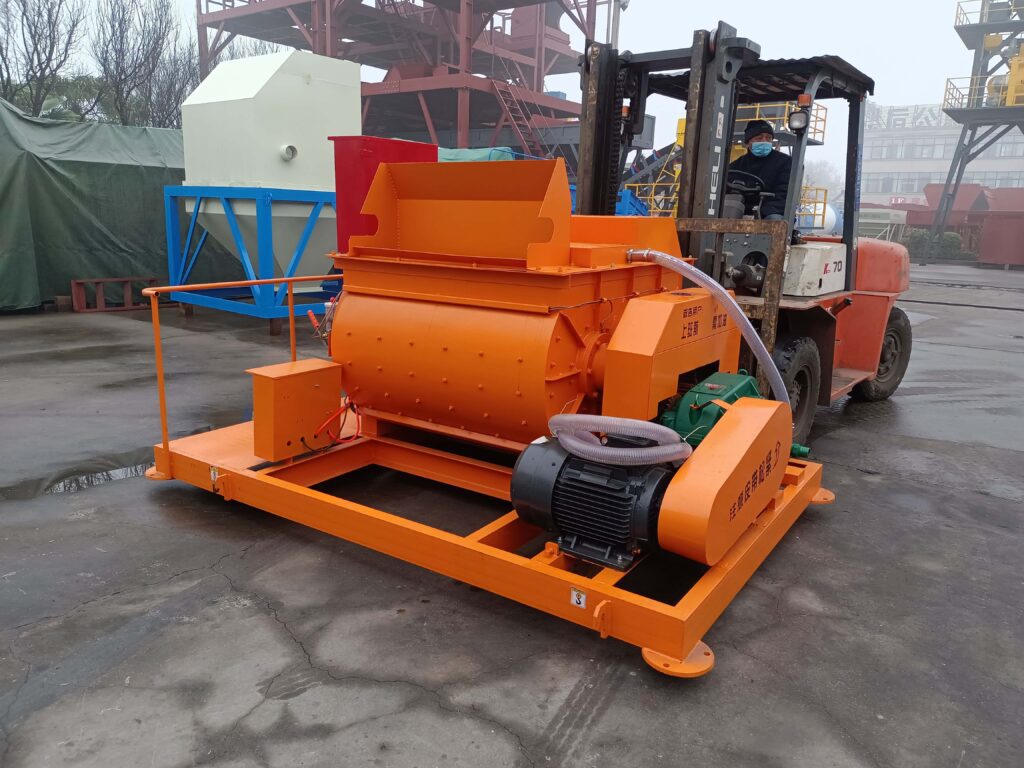
Mélangeur Le malaxeur est l'élément central de la centrale à béton. Il est chargé de mélanger uniformément les différentes matières premières. Les types de malaxeurs les plus courants sont les malaxeurs à deux arbres, les malaxeurs à un arbre et les malaxeurs forcés. Le choix du malaxeur dépend des besoins de production, du type de béton et de l'échelle de construction.
Système de stockage des agrégats Il est utilisé pour stocker les agrégats tels que le sable et la pierre, généralement dans des entrepôts séparés. Chaque entrepôt dispose d'un système d'alimentation indépendant qui peut transporter automatiquement les agrégats vers le malaxeur.
Système de stockage et de livraison du ciment Le ciment est acheminé du système de stockage du ciment au malaxeur par l'intermédiaire d'un convoyeur à vis dédié ou d'un système de transport pneumatique.
Centrale à béton
La centrale à béton est un type d'équipement spécialement utilisé pour la production de béton, qui est largement utilisé dans les travaux de construction, la construction de routes, les grands projets d'infrastructure et d'autres domaines. Elle mélange des matières premières telles que le ciment, le sable, le gravier, l'eau et les adjuvants en un béton uniforme dans une certaine proportion et le livre sur le site de construction pour utilisation. La centrale à béton est l'une des infrastructures importantes des projets de construction modernes, garantissant la qualité et la stabilité de l'approvisionnement en béton. Principaux composants d'une centrale à béton Système de dosage Le système de dosage est un élément clé de la centrale à béton. Il est utilisé pour peser et distribuer automatiquement les matières premières (telles que le ciment, le sable, la pierre, l'eau et les adjuvants, etc. La précision du système de dosage influe directement sur la qualité du béton.
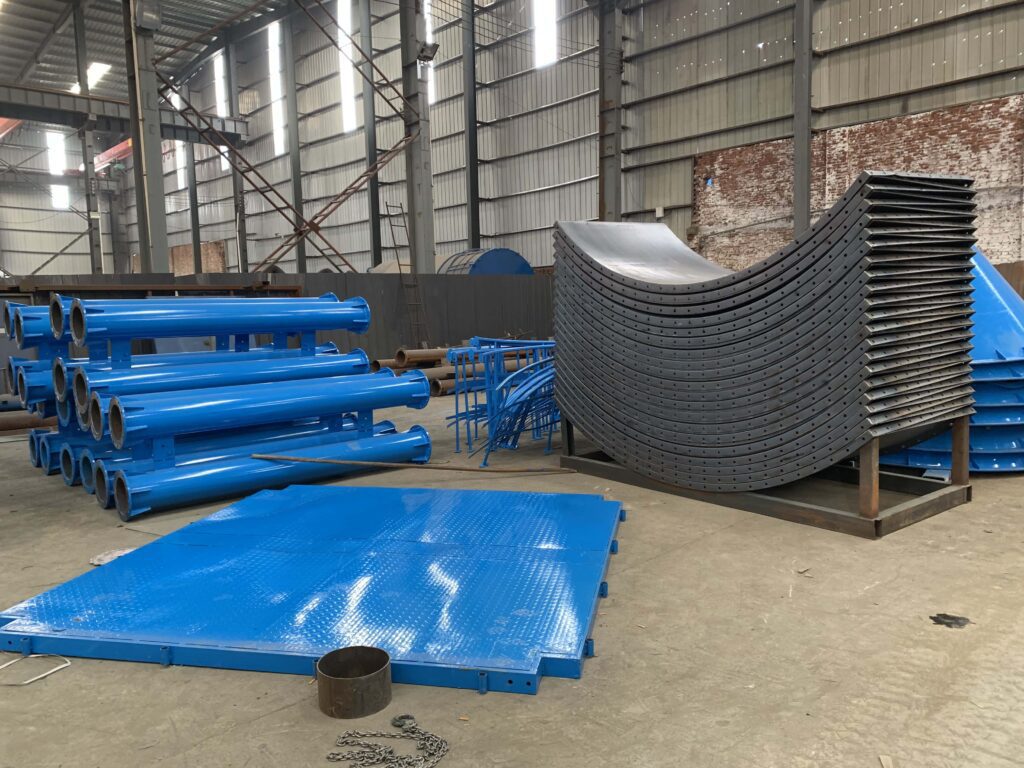
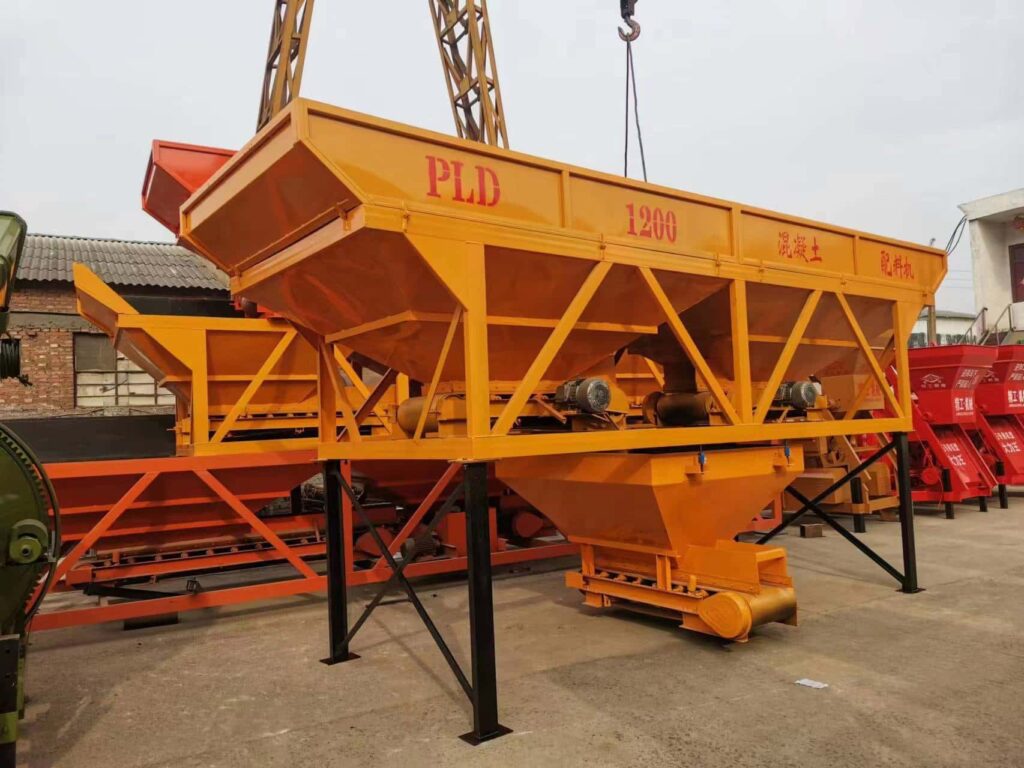
Main components
(1) Aggregate supply system
Aggregate silo: used to store aggregates such as sand and stone. Generally, there are multiple silos to meet the needs of different proportions.
Conveying system: Aggregates are transported to batching machines using belt conveyors or hopper elevators.
Batching machines: Accurately measure various aggregates to ensure stable concrete quality.
(2) Powder supply system
Cement silo: stores cement or fly ash. Usually, it adopts a closed structure to prevent dust pollution.
Screw conveyor: used to transport powder from the silo to the mixer to ensure production continuity.
(3) Water and admixture supply system
Water tank: stores water required for mixing. Some large sites use underground water tanks.
Admixture system: includes storage tanks, metering pumps, conveying pipelines, etc., used to accurately add admixtures to improve concrete performance.
(4) Measuring system
Aggregate metering: sand and stone aggregates are accurately measured through an electronic weighing system.Powder metering: cement, fly ash and other powders are accurately measured using a spiral scale.Water and admixture metering: flow meters or weighing metering devices are used to ensure the accuracy of concrete mix ratio.
(5) Mixing system
Main mixer: core equipment, generally a twin-shaft forced mixer is used to ensure uniform mixing of concrete.
Discharging system: after mixing, the concrete is discharged through a pneumatic discharge door or hydraulic system and transported to a concrete tanker.
(6) Control system
Automation control: including PLC system and computer console, which can accurately control each link and improve production efficiency.
Data storage and management: the production data of each batch of concrete can be recorded to facilitate quality traceability.
Remote monitoring: some advanced systems support remote control, which is convenient for management personnel to check the production status at any time.
OBTENIR UN DEVIS RAPIDE
L'accent est mis sur : Fabrication de dalles de plancher en béton préfabriqué, de poutres en béton préfabriqué, de murs en béton préfabriqué, de tuyaux en blocs de béton préfabriqué&Machines auxiliaires correspondantes.






